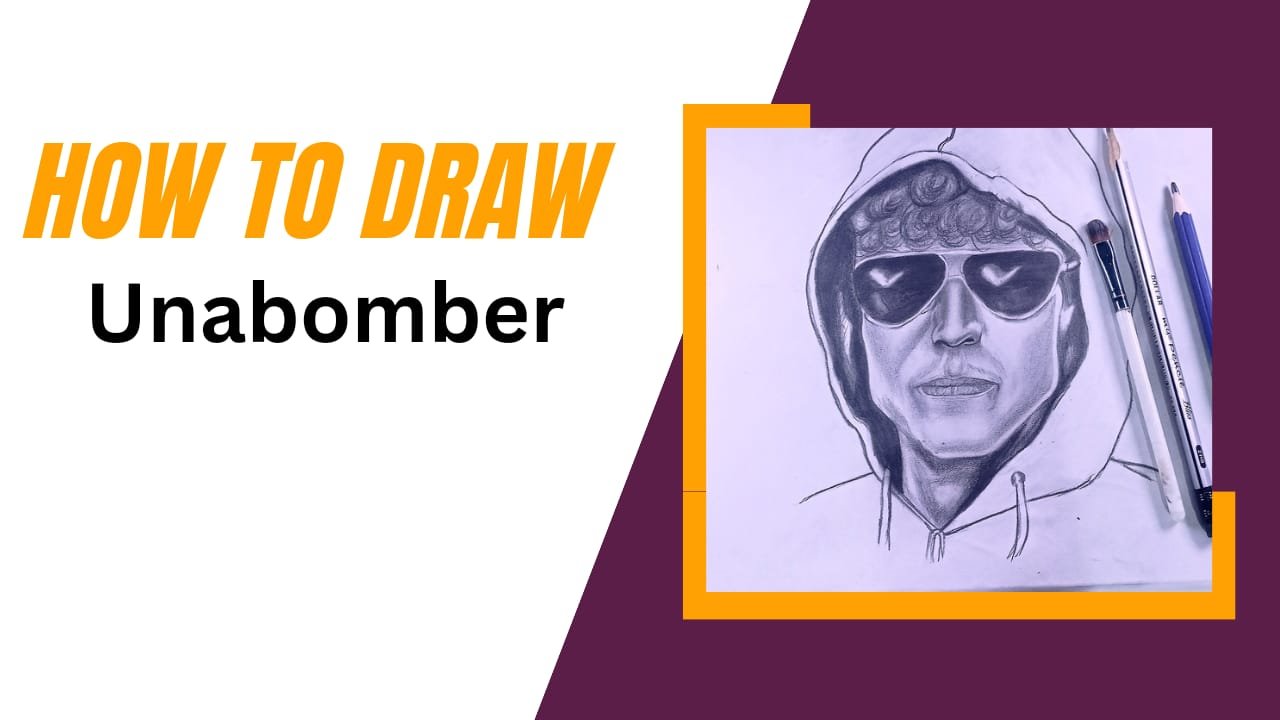Introduction to Unabomber sketch
The Unabomber sketch, a frightful portrayal scratched into America’s aggregate memory, addresses quite possibly the most serious manhunt in FBI history. Made from witness depictions following a bombardment in 1987, the sketch includes a hooded man with pilot shades and a mustache, a picture that sparked public interest and dread. The Unabomber, later recognized as Ted Kaczynski, did a 17-year mission of mail bombings that killed three individuals and harmed 23. This picture became inseparable from a nondescript, subtle danger, starting with starting with inescapable media inclusion and huge policing. The sketch’s dispersion was critical in keeping the case in the public eye, at last adding to Kaczynski’s catch in 1996. The Unabomber sketch remains a persevering image of the time’s tensions and the steady quest for equity despite homegrown psychological oppression.
Material required:
.Material Expected to Draw the Unabomber Sketch. Making a criminological sketch, for example, the renowned Unabomber sketch, requires a mix of imaginative expertise, mental knowledge, and specialized mastery. This nitty-gritty drawing process includes explicit materials and instruments to accomplish an exact portrayal in light of witness depictions.Also read Easy Steps to Make Anime Sketch. Here is a thorough rundown of the materials expected to draw the Unabomber sketch:
Essential drawing instruments
Graphite Pencils:
The scope of graphite pencils (from 2H to 6B) is fundamental for drawing beginning diagrams and adding changing levels of concealment and detail. Harder pencils (H, 2H) are utilized for scarcely discernible differences, while gentler pencils (B, 2B, 4B, 6B) are great for concealing and making profundity.
Erasers:
Both massaged erasers and accuracy erasers are fundamental. Plied erasers can be shaped to lift graphite delicately without harming the paper, though accuracy erasers are helpful for eradicating little subtleties and refining edges.
Paper:
Superior-grade, smooth-attracting paper is prescribed to guarantee clean lines and point-by-point concealment. Sketchpads intended for pencil work with a medium weight (around 80–100 lb) give the best outcomes.
Rulers and Compasses:
These apparatuses assist in keeping up with revising extents and evenness, which are essential in measurable portrayals where exactness is paramount.
High-level drawing apparatuses
Charcoal Pencils:
For more profound blacks and a more finished feel, charcoal pencils can be utilized, especially for concealing huge regions and making contrast.
Mixing Instruments:
Mixing stumps or tortillons are utilized to streamline pencil stamps and make inclinations, giving the sketch a more reasonable appearance. Q-tips and tissues can likewise fill this need.
Scarce difference pens:
When the pencil sketch is finished, barely recognizable difference pens with shifting nib sizes (0.1 to 0.5 mm) can be utilized to add authoritative diagrams and better subtleties, upgrading the sketch’s lucidity and accuracy.
Reference and Improvement DevicesWitness Portrayals:
Point-by-point notes and depictions from witnesses are essential. These incorporate data about facial highlights, haircuts, attire, and embellishments, which must all be interpreted precisely into the sketch.
Photos:
Reference photographs of comparable facial elements or dresses can help with making a more exact and practical portrayal.
Lighting Devices:
Legitimate lighting is fundamental for drawing. A decent-quality movable work area light guarantees predictable enlightenment, forestalling shadows that could influence the exactness of the sketch.

Advanced Apparatuses:
In current scientific workmanship, computerized devices like tablets and pointers (e.g., Wacom tablets) are progressively utilized. Programming, for example, in Adobe Photoshop or Corel Painter, considers calibrating subtleties and making changes more proficiently than customary strategies.
Mental Contemplations
Relational Abilities:
The craftsman should have areas of strength and the ability to precisely assemble affinity with witnesses, making them adequately agreeable to review and depict the suspect.
Perception Abilities:
Sharp perception abilities are fundamental for noticing unpretentious subtleties in witness depictions and making an interpretation of them into the sketch.
Persistence and tender loving care:
Scientific portraying is fastidious work that requires tolerance and a sharp eye for detail to catch each subtlety depicted by witnesses.
Drawing a legal sketch like the Unabomber’s requires a blend of fundamental and high-level drawing devices, reference materials, and mental abilities. The craftsman should meticulously mix these components to make an exact and sensible portrayal in light of witness depictions. From graphite pencils to computerized devices, every material assumes an essential part in the drawing system, guaranteeing that the eventual outcome is both point-by-point and consistent with the observer’s accounts.
Step-by-Step Guide to Creating a Forensic Sketch of the Unabomber
Making a measurable sketch like the renowned Unabomber sketch is a fastidious interaction that requires a mix of creative expertise, specialized accuracy, and successful correspondence with witnesses. The following is a definite bit-by-bit guide on the most proficient method to make such a sketch, featuring the instruments and strategies utilized at each stage.
Stage 1: Get-together Observer Data Introductory Meeting:
The interaction starts with an itemized interview of the observers. The craftsman should pose explicit inquiries to accumulate as much data as could be expected about the suspect’s elements. Significant angles incorporate facial shape, eye tone and shape, nose size and shape, mouth, hair tone and style, and any distinctive imprints.
Recording Depictions:
All portrayals given by the observers ought to be meticulously recorded. This might incorporate taking notes, sound accounts, or even introductory unpleasant portrayals in light of the verbal depictions.
Stage 2: Fundamental Drawing:
Setting Up: Accumulate every fundamental material, including top-notch drawing paper, a scope of graphite pencils (2H to 6B), erasers, rulers, and mixing devices. Guarantee that you have an agreeable and sufficiently bright work area.
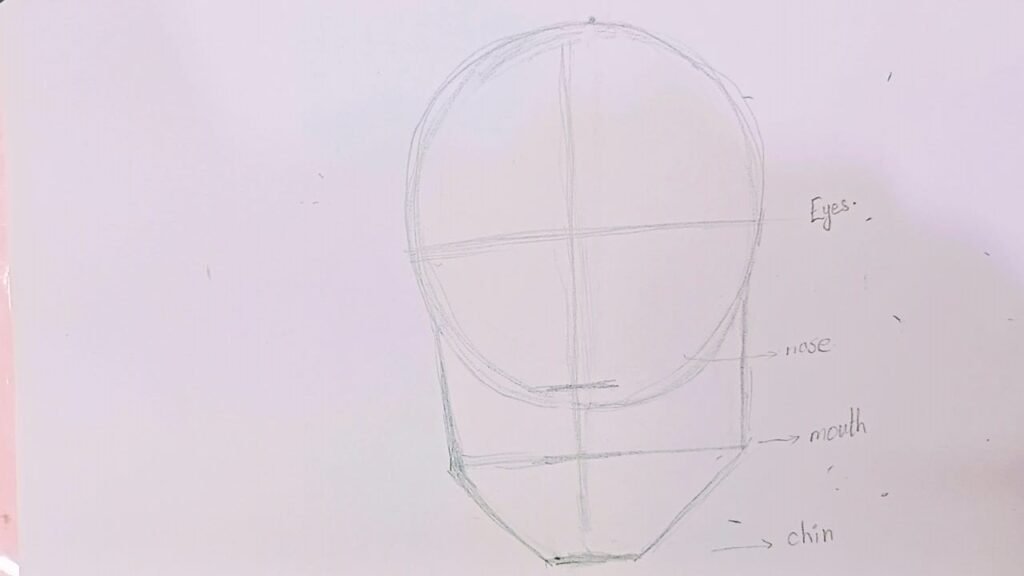
Essential Diagram:
Start with a light, harsh framework of the face shape, utilizing a hard pencil (for example, 2H). This stage centers around getting the general extents right in view of the portrayals given.
Arrangement of Highlights:
Delicately sketch the position of key facial elements—eeyes, nose, mouth, and ears. Use rules to keep up with balance and extent.
Refining the Highlights
Eyes:
Begin enumerating the eyes, as they are often the most expressive piece of the face. Give close consideration to the state of the eyelids, the size and position of the irises, and particular subtleties like crow’s feet or tired eyes.
Nose:
Continue on toward the nose, zeroing in on its shape, width, and length. Use concealment to characterize the nostrils and the scaffold of the nose.
Mouth:
Sketch the mouth, noticing the shape and totality of the lips. Detail any distinctive elements, like a conspicuous cupid’s bow or a slump at the corners.
Hair and Beard Growth:
Draw the hairline and haircut, including any beard like a mustache or facial hair growth. Use strokes that pursue the normal bearing of hair development for a practical look.
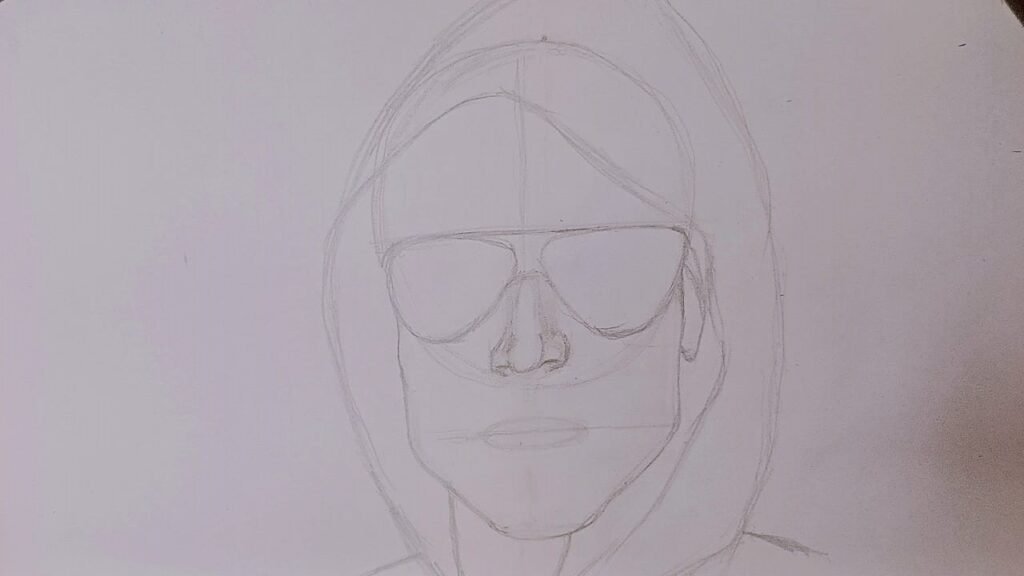
Stage 4: Adding Subtlety and Profundity
Concealing:
Start concealing to add profundity and aspect to the face. Utilize gentler pencils (for example, 4B or 6B) to make shadows and features. Mixing instruments like stumps or tortillons can streamline the graphite and create inclinations.
Surface:
Add surface to the hair and skin. For hair, utilize a blend of light and dull strokes to make a practical appearance. For skin, add unpretentious concealing to show the surface and any defects like kinks or scars.
Attire and Frill:
Incorporate any significant apparel items or embellishments depicted by the observer, like glasses, caps, or hoods. For the Unabomber sketch, the particular pilot shades and hoodie were basic subtleties.

Stage 5: Finishing the Sketch
Audit with Witnesses:
When the sketch is adequately nitty-gritty, survey it with the observers. This step is critical for guaranteeing precision. Witnesses can give criticism on any changes expected to all the more likely match their memory of the suspect.
Adapt:
In view of the criticism, make any important adjustments to the sketch. This could include changing the state of the highlights, adding or eliminating subtleties, or refining the overshadowing.
Last Contacts:
Add the last contacts to upgrade the general lucidity and authenticity of the sketch. Guarantee that all lines are spotless and that the concealment is smooth. Utilize a scarcely discernible difference pen to characterize the main highlights and add contrast.

Stage 6: Digitizing the Sketch (Discretionary)
Filter the Sketch:
When the sketch is concluded, it very well might be digitized for additional refinement or for appropriation. Utilize an excellent scanner to catch the picture at a high speed.
Advanced Improvements:
Utilizing programming, for example, Adobe Photoshop, the sketch can be additionally upgraded. Changes could incorporate calibrating the difference, adding advanced concealment, or adjusting any minor blunders.
Conveyance:
The digitized sketch can then be effortlessly disseminated to policing, news sources, and people in general on a case-by-case basis.
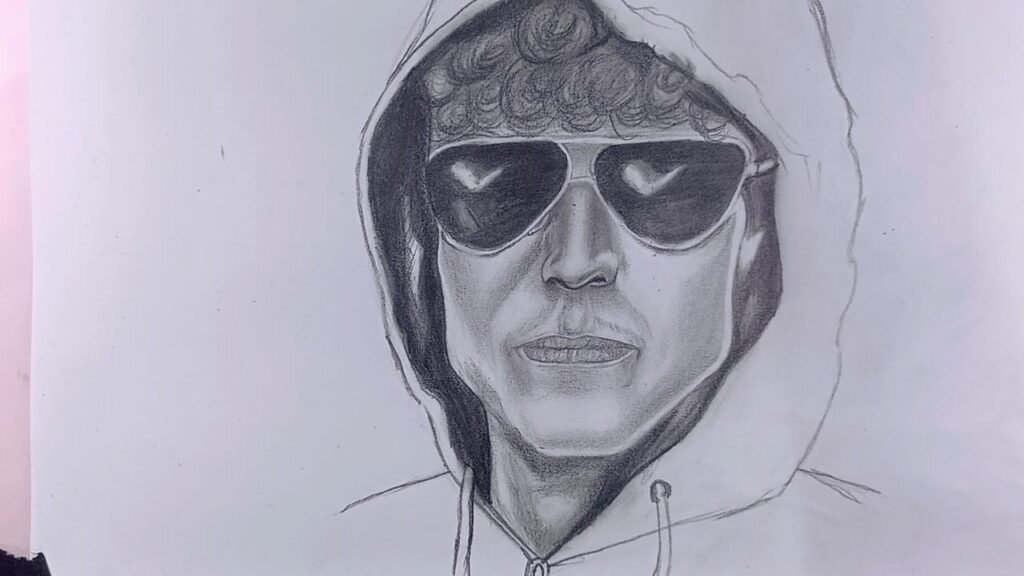
Stage 7: Documentation and Record-Keeping
Record the first:
Securely store the first sketch and every single related note. This documentation is significant for future reference and for any judicial actions that might emerge.
Keep a Data Set:
Keep a data set of all representations and related data. This assists in cross-referring to different cases and in keeping a record of witness records and craftsman translations.
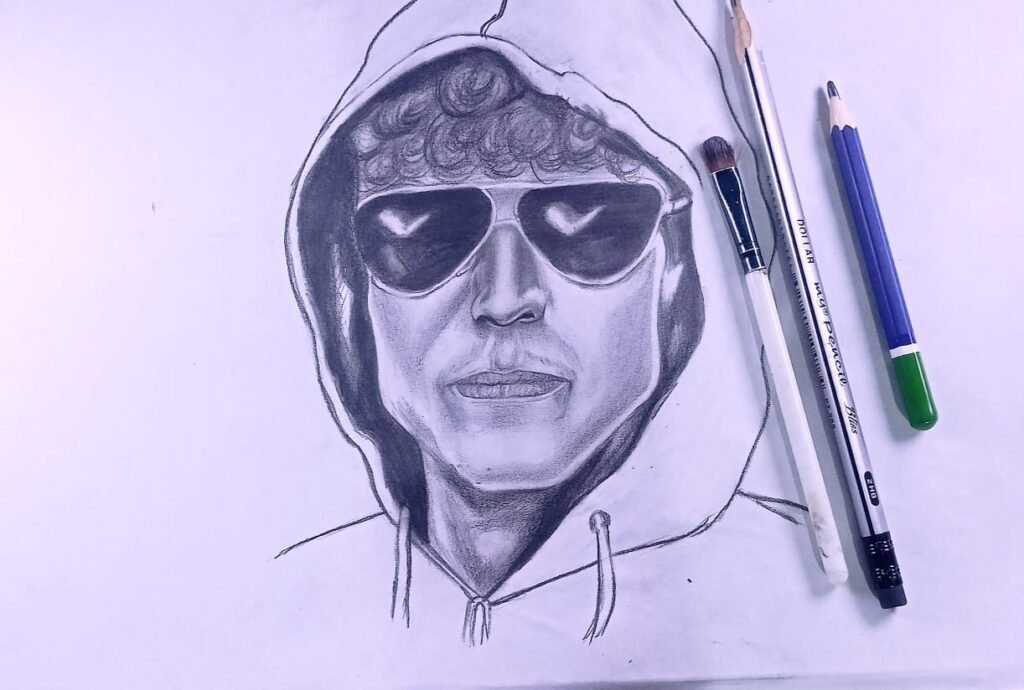
Making a legal sketch like the Unabomber’s includes an itemized, bit-by-bit process that incorporates creative expertise with calculated information assortment and investigation. From starting meetings with observers to the last address of the sketch, each step is urgent in guaranteeing the exactness and viability of the portrayal. By following these means and utilizing the fitting apparatuses and methods, measurable craftsmen can deliver portrayals that are instrumental in the identification and worry of suspects.
Tips for Creating the Perfect Unabomber Sketch
Making a criminological sketch like the Unabomber sketch expects scrupulousness, sympathy with witnesses, and dominance of creative strategies. Here are a few fundamental tips to guarantee the precision and viability of the sketch:
1. Lay out Affinity with Witnesses:
Building trust and affinity with witnesses is vital. Cause them to feel good and urge them to give however much detail as could reasonably be expected about the suspect’s appearance. Listen mindfully and pose unassuming inquiries to inspire explicit portrayals.
2. Center around key highlights.
Distinguish and focus on the most particular elements portrayed by witnesses. On account of the Unabomber, key highlights incorporated the hooded pullover, pilot shades, and mustache. Give close consideration to these subtleties and guarantee they are precisely portrayed in the sketch.
3. Use reference materials admirably.
While witness portrayals are essential, reference materials, for example, photos of comparable facial elements or dresses, can provide significant strengthening data. Utilize these references to direct your sketch, yet consistently focus on the observer’s memory.
4. Catch Extents and Evenness
Keeping up with the right extents and evenness is fundamental for a precise portrayal. Use rules and estimations to guarantee that facial highlights are appropriately adjusted and scaled relative to one another.
5. Focus on looking
Indeed, even in a criminological sketch, unpretentious signals can pass on significant data about the suspect’s disposition. Focus on subtleties like the slant of the head, the bend of the lips, and the wrinkle of the temple to precisely catch the general impression.
6. Use lighting and shadows.
Lighting plays an urgent role in featuring facial highlights and creating profundity in the sketch. Use concealing methods to recreate the play of light and shadows, stressing forms and adding authenticity to the portrayal.
7. Work on Portraying Under Tension
Scientific outlining frequently happens in high-pressure circumstances, for example, after a wrongdoing has happened. Work on outlining under time limitations to foster the capacity to work rapidly and proficiently while still catching fundamental subtleties.
8. Look for criticism and joint effort.
Routinely look for criticism from witnesses, specialists, and individual criminological craftsmen all through the outlining system. A coordinated effort can assist with approving the exactness of the portrayal and distinguishing regions for development.
9. Remain goal-oriented and nonpartisan
Keep up with objectivity and nonpartisanship all through the portrayal system. Abstain from making presumptions or forcing individual inclinations on the portrayal. You want to reliably address the observer’s memory of the suspect.
10. Persistently further develop abilities
Criminological portraying is a specific expertise that requires progressive practice and refinement. Remain refreshed on the most recent strategies and advances in criminological imaginativeness, and ceaselessly look for potential chances to work on your abilities through preparation and joint effort with peers.
By following these tips and methods, criminological specialists can make profoundly precise and successful portrayals, similar to the notable Unabomber sketch, that assume a basic part in criminal examinations and the quest for equity.
What to Keep Away from During Unabomber Representations:
Making an exact, measurable sketch like the Unabomber sketch requires cautiousness, meticulousness, and adherence to best practices. Nonetheless, there are sure traps to keep away from to guarantee the adequacy and unwavering quality of the last portrayal. Here are some critical things to keep away from during Unabomber outlines:
1. Accepting Subtleties
Try not to make suppositions about the suspect’s appearance in view of generalizations or assumptions. Stick rigorously to the depictions given by witnesses and avoid adding or decorating subtleties that were not unequivocally referenced.
2. Overreliance on Reference Materials
While reference materials can be useful, try not to depend too intensely on them to the detriment of witness depictions. Recall that observers’ recollections might contrast with reference photographs, and their memories ought to outweigh everything else in the sketch.
3. Dismissing Observer Criticism
Try not to dismiss or make light of input from observers during the drawing process. Their feedback is significant for guaranteeing the exactness and importance of the last portrayal. View their ideas in a serious way and consolidate changes depending on the situation.
4. Surging the Interaction:
Legal portrayal requires persistence and tender, loving care. Try not to hurry through the cycle, trying to rapidly wrap up. Find the opportunity to painstakingly think about each component and guarantee that the sketch precisely mirrors the observer’s memory of the suspect.
5. Disregarding Look
A look can give significant insights about the suspect’s attitude and mindset. Try not to ignore unobtrusive signs like the slant of the head or the articulation in the eyes. These subtleties can add profundity and authenticity to the sketch.
6. Wandering from Witness Portrayals
Remain consistent with the portrayals given by witnesses, and try not to wander from their memories. Indeed, even little deviations from the observer’s memory can make one think twice about the precision and dependability of the last sketch.
7. Adding Superfluous Subtleties
While it’s critical to catch key highlights precisely, try not to incorporate pointless subtleties that might divert from the general portrayal. Center around the most unmistakable highlights portrayed by witnesses and focus on those in the sketch.
8. Permitting Individual Predisposition to Impact the Sketch:
Legal craftsmen should stay unbiased and objective all through the outlining system. Try not to permit individual predispositions or presumptions to impact the portrayal of the suspect. You want to loyally address the observer’s memory, no matter what closely-held convictions.
By keeping away from these normal entanglements, scientific specialists can make profoundly exact and solid draws that really help in criminal examinations, for example, the notable Unabomber sketch.
Conclusion:
With everything taken into account, making a lawful sketch like the Unabomber depiction demands special attention and adherence to best practices. By avoiding typical snares like tolerating nuances, overrelying on reference materials, and disregarding spectator input, criminologically skilled workers can ensure the precision and unflinching nature of their portrayals. It’s critical to stay predictable with the eyewitness’ portrayals, center around key components, and stay aware of objectivity in the meantime. Correspondingly, as a talented pilot graphs a course with precision, a logical specialist investigates the unusual nuances of memory to make an undaunted depiction. At last, these depictions go about as huge devices in criminal assessments, coordinating policing the fear of suspects and the journey for value. Through a careful balance of technique, sympathy, and consistency, criminological experts expect a critical part pursuing truth and objectivity even with weakness.

